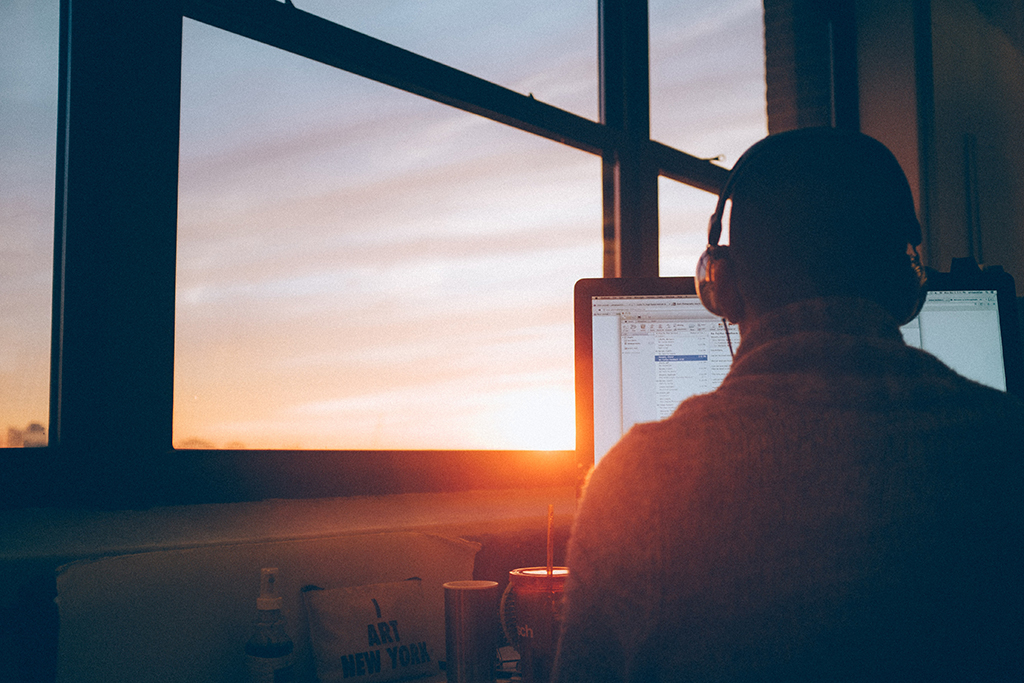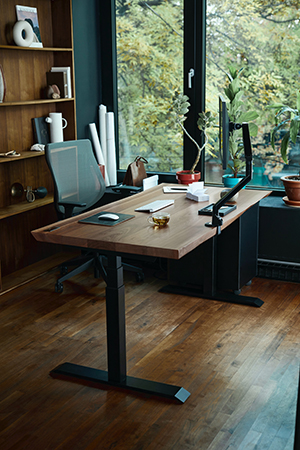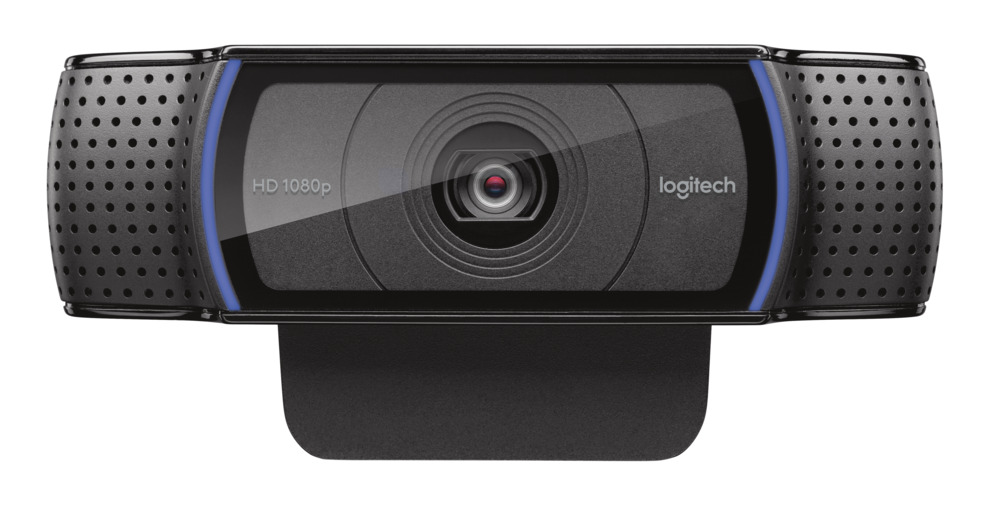
Remote work has been my mode for the past several years and I’m a big proponent of this style. The ability to have some flexibility in my day, exist in my own space, and avoid hours per week of mind-numbing commute time is incredible.
Remote work doesn’t come without its own challenges, however. One advantage to company-provided office space is usually having an environment already set up for you. Things like a desk, chair, computer equipment, and even acceptable lighting are generally taken care of. You generally also interact in person more, so quality videoconferencing accessories are less important.
When you elect to work remotely you must consider the differences. During the pandemic a lot of people were thrust into this for the first time, and quickly discovered the disadvantages to doing their jobs from a laptop at the kitchen counter or living room. That freedom and flexibility comes with the need to adapt.
Fortunately many companies who have continued or adopted remote work as standard practice also include a stipend for setup costs. Even if your employer doesn’t have this benefit, you don’t need to drop thousands of dollars just to get a reasonable workspace set up. In this article I’ll share some of what I use, and why I find it important.
Jump to Topics:
– The Space
– On the Surface
– Sit for a While
– Light ’em Up
– The AV Club
– Notes and Task Management
The Space
As I mentioned, during the pandemic it was fairly common to see people sitting at a kitchen island or coffee table. They quickly discovered the importatance of intentional workspace as some of us have known for a while. I’m going to list out what I consider to be important in a remote work environment.
Dedicated Workspace. I can’t stress this one enough. You need a place to focus on work without constant distractions from other people. It should be set away from the other life activities which occur in the home.
Having a dedicated space also allows for a crucial aspect of work-life balance: separation of duties. When you commute to an office, you have the benefit of physical distance to let you keep work and home life as separate entities. Once you work remotely these can become the same, meaning you must intentionally create a gap between work and home activities.
I also highly recommend having some open area around you during the day. If you carve out a small corner of a room and stare at walls all day long it will become confining. It’s your space so make it great! Of course not everyone has a dedicated room to use, but even simple alignment of your desk can make a big difference in your happiness.
Since we’re talking about remote work, also consider what’s visible in the space around you. If the background is a cluttered disaster or shows parts of your home you’d rather not bring guests into, it will be a distraction during video calls. You do have a couple options here. You can always use a blurred or custom video background, and these days the automatic “green screen” effect works very well. Otherwise take the time to make your surrounding space clean, with work-safe accessories that match your personality.
On the Surface

You may not think a desk is the most important item, and you’re probably correct. After all, most of us work on a laptop these days. Sometimes we have an extra display or two, but it’s fairly simple and portable. That said, choice of desk can make a big difference in ergonomics and physical well being.
At its most basic form you need a stable platform with room to do your work. The surface should be smooth for writing and mouse use purposes, and it shouldn’t move around when you’re doing typical work activities. You can find any number of these to fit your style preferences and space constraints at office supply or home lifestyle stores.
The other option is standing desk which can alter height on demand. These are highly desirable for a work-from-home environment where you are unlikely to move around much during the day. This allows you to change your physical position as often as you like, which is fantastic for back and neck health. Trust me – as you get older, this becomes exponentially more important to you.
I’ve used a full electric standing desk for several years now. My tech usage has increased to a couple workstations so this has actually grown to two standing desks side by side. I’ll link to the ones I like below, but some must-have standing desk features include:
- A controller with memory settings. I have two separate standing positions depending on where I want my arms to rest, and my seated height has actually changed over the years. Sometimes I even just like to make temporary adjustments, and the memory lets me go right back to normal. This is an inexpensive but valuable upgrade.
- Power grommet. Most standing desks will have a standard cutout, or can be ordered with the cutout as an option. I’ve linked to a couple good options below. Usually the desk manufacturers mark these up in price and may not have features like USB charging. Generally these are all a standard size though, so get what you want! It is fantastic to have power on top of the desk without having to look for the power strip underneath. If your desk doesn’t have the cutout, an appropriate hole saw and a drill can sort that out if you’re so inclined.
- Heavy duty legs. Yeah I know a laptop and display don’t weigh a lot. It seems unnecessary to beef up the capacity. However the heavier duty variants will be more stable meaning the desk won’t move around during regular use, and stronger components mean you will never overload them – or likely ever wear them out.
- Desk surface. This one is more personal preference, but I generally opt for thicker materials when possible. They won’t warp and will hold up to anything you can dish out. One of my desks is a thick particle board with smooth wood-appearance top, the other is actual rubberwood. Both are doing just fine. I tend to like more natural (lighter) wood looks, but do whatever makes you happy.
- Cable management. Nothing looks worse with your nice standing desk than wires going all over the place, especially because these usually lack sidewalls to block views. It’s also a trip/foot-snag hazard. Methods vary; I really like the Uplift magnetic cable channels which just stick to the upright legs. I also suggest some adhesive anchors and tie wraps, these are super cheap and can be cut/reinstalled when you change it later.
- Go bigger than you think you need. I really suggest the most desk you can fit in the space you have. I’ve never once wished for a smaller desk, but have on the opposite end of that equation quite a few times.
One thing I’m not a personal fan of are the raised platforms which allow you to move your laptop up and down while the desk remains stationary. Yeah they work, and if it’s all you can accomodate it’s probably better than nothing. You’ll find they take up a lot of desk real estate though, and add one more point of instability.
I do use a raised laptop stand on my standing desk, however. These are especially great if you also use an extra display with your laptop as it aligns the screens. These stands also provide better cooling for your laptop, help with cable management, and give some space back under the laptop for storage (though I find this aspect less useful).
Uplift Desks: https://www.upliftdesk.com/
Solos IT Desks: https://solos-it.com/
Power Grommet: https://amzn.to/3Knvtdf or https://amzn.to/3IfUrsz
Laptop Stand: https://amzn.to/3XLXoXi
Sit for a While
While a standing desk may not be critical to your day-to-day, a comfortable chair is one of the single best things you can buy. These days the options are numerous and some are very well made. Cost varies widely from under $100 to a couple thousand or more, so take some time and do research. Things I’d look for include:
- A somewhat firm cushion. If it’s too soft or flexible it will collapse underneath you and you’ll eventually get sore and uncomfortable. This will then turn into compensating positions and muscle strain in exciting new ways.
- Adjustable arm rests. Most chairs will move armrests up and down, higher end ones will also move sideways and fore/aft to completely adjust for your personal shoulder width and arm length. I wouldn’t rank this quite as high as the cushion, but now that I have a fully adjustable chair I get why this one is important.
- Height adjustment. They all do this, but make sure it stays where you set it. Some feel like they’re on a shock absorber and will bounce up and down excessively with weight change. This means your position relative to the desk will change if you shift positions.
- Backrest adjustments. This is a hallmark of the higher end chairs, but will allow you to shape the backrest to your body and adjust the rake for your position of comfort. This is another one that I didn’t fully appreciate until I had it, but it made a remarkable difference in back pain avoidance after hours of zoom calls. If you don’t get an adjustable backrest, at least get a chair with a substantial one. Those little back pads on basic cubicle chairs are worthless after a short time.
The influential gaming industry has led to a lot of improvements for the work from home crowd as well. The need for people to remain in a chair for hours and still be functional at the end means there are now some excellent chair options with tons of adjustability. A high end gaming chair can still set you back several hundred dollars at minimum, but if you plan to be in it all day long I think this is a reasonable expense. Going on up the line you get into chairs like the Herman Miller Embody which can be upwards of $2,000.
Towards the bottom end are typical office supply store executive chairs. I used one for years before upgrading, so don’t feel like these are a bad choice. Go sit in them and see what works for you!
Top of the line, Herman Miller Embody: https://amzn.to/3KqLSxB
A great mid-range option, Herman Miller Aeron: https://amzn.to/3YMIHEH
Another mid-range option, Titan Evo Gaming Chair: https://amzn.to/3XKI0KX
Light ’em Up
Room lighting is vital to a happy work experience. I would personally avoid flourescent white lights, the flicker frequency can cause eye annoyance after a while. Incandescents are on the way out, however there are many LED options which mimic the warm white light and will last years longer. I really like Kasa brand products in general and link to some options below. They’re app controllable, don’t require a hub, and can run scenes or group settings.

You can choose floor or desk positional lighting; there are hundreds of options out there to fit your lifestyle. If you have overhead room lighting I suggest dimming capability and color warmth as beneficial options. There are times I prefer less light or want to make it cooler/warmer; another plug for LED bulbs which let you accomplish that.
If you do add desk lighting, definitely look for a dimmable, warmth-changing LED model. I would also suggest something with a stable base and movable light head; this will keep it still and let you position the light to mimimize glare.
If you have choices on desk placement, I also suggest having natural light sources (aka windows) in front of you. These are computer display glare factories when behind the display so position is important. Natural light does wonders for your mental well-being though, so you want it in your home office whenever possible.
When it comes to videoconferencing you need balanced light in the room. Avoid bright sources behind you, as the camera will struggle with white balance and exposure. This tends you make you appear as a silhouette. Some front light to make your face stand out is helpful to your coworkers. Excessive overhead light can also imbalance your video, either causing a lot of glare or giving you a glowing halo effect.
You don’t need exotic vlogger lights wrapped around your camera. You certainly can if you want to, but just making a basic attempt at natural light colors without big point sources or backlighting will accomplish what you need for remote work purposes. Software like Zoom also does a good job of automatically compensating for varied conditions, but it isn’t magic. If you sit in a dark cave or have no front light, no amount of correction will help.
Kasa full color smart bulbs: https://amzn.to/3Ijj4o0
Kasa soft white smart bulbs: https://amzn.to/3YXQ788
The AV Club
Have you ever tried to listen to a videoconference where the other person had bad video or audio? It’s beyond annoying, particularly in a group setting when it causes widely imbalanced volumes for participants. Don’t be that person.
You don’t need to drop hundreds of dollars on equipment here. A basically decent webcam is enough for day to day use. I’ve linked to a reasonably-priced Logitech webcam that I also use in my setup below.
A new trend is using 360 cameras which can follow you around. I haven’t tried one yet as I tend not to pace around when I sit on calls. That said, if you have a hard time sitting still or need to move around a room for whatever reason, these are a pretty cool idea. I’ll link to some I’ve seen. A note on the Insta360 – while I haven’t used their webcam, I do use their 360 action cam products and those have been fantastic.

Voice quality is generally pretty good if you use a purpose-built webcam. The microphones in those are meant for the job, so don’t overthink this. However I have been on meetings with people using actual podcast mic setups, and they sound amazing! So this one is up to you. If you want legible and pretty good audio just go with the cam mic. If you want to sound like a radio DJ with impeccable audio, a basic podcast mic and arm might be worthwhile.
At this point you’re probably asking why you can’t just use the camera and mic in your laptop. The short answer is, you totally can! Everything comes with compromise however. Laptop cameras and microphones are tiny and will pick up any typing noise. They are fine if it’s what you have, but if you’re working at a dedicated desk most of the time I would suggest springing for a proper webcam at minimum.
As far as portable audio goes, noise canceling headphones are the ticket. If you work in coffee shops or other noisy places like airports, or just want to have the audio remain with you as you move around, a good set of headphones is paramount. This is one of those “get what you pay for” areas. I link to a Bose model below which I personally use. They are not cheap, but the noise canceling and battery life are incredible, the microphone actually works, and they’re really comfortable. There’s nothing worse that going cheap and buying twice.
If you use headphones, a vertical stand might also be worthwhile. These give your expensive headphones a home during the workday, and some will have other features like built-in power ports and storage. Since my standing desk already has a power insert nearby, I’ve opted for a basic headphone stand that more or less matches the desk surface.
Logitech Webcam: https://amzn.to/3Z199Lf
Insta360 Webcam: https://amzn.to/3Z19iyh
Bose 700 Noise-Canceling Headphones: https://amzn.to/3Z6sLNy
Headphone Stand: https://amzn.to/3Z1aGjS or https://amzn.to/3xF6XwS
Notes and Task Management
Finally, consider how you will organize your flow. I’ve done the sticky note thing for years and it’s OK as long as I manage the number of them. I have problems with letting them build up though, and then they lose their “reminder” value. Your mileage may vary.
Two products I think are valuable in this area include Fluidstance and a digital tool called Asana.
Fluidstance makes a desk product called Slope. This is an all-metal dry erase board which sits under your monitor or other convenient location. It’s big enough to make simple drawings or put really important notes directly where I will see them every day, but small enough to stay out of the way. There are other alternative products out there as well, but this is the one I use.
Asana is a digital task management tool. They have a free tier or you can pay for premium features and team workflows. I’ve only recently begun using it, however this is doing wonders for organizing my mental circus and keeping parallel streams in check. It’s also usable via web, desktop, and mobile apps, so you can track your projects and tasks anywhere.
Fluidstance Slope: https://fluidstance.com/products/slope
Asana: https://asana.com
In Closing
Remote work is here to stay for many companies, and for employees who simply function better in this setting. Doing it well means having a workspace that functions for you and maximizes comfort. Please share comments below if you have other tips on what works for you in your remote work lifestyle!
Title photo by Simon Abrams on Unsplash
Desk photo by ergonofis on Unsplash
Of note: All product links here are affiliate links. This means you don’t pay anything extra, but I get a little kickback from your purchase which helps keep the HeadingForTech lights on. I appreciate you using them!